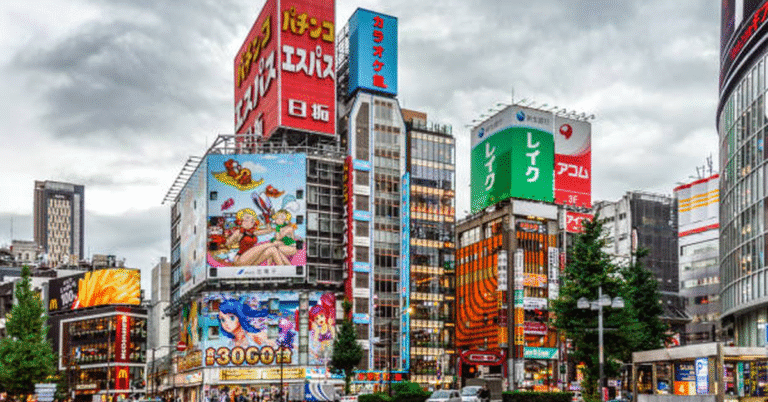
The word “Mannacote” may not be a household name, but it is steadily emerging in discussions across industries, particularly in manufacturing, health-related applications, and material sciences. Like many specialized substances or branded formulations, Mannacote reflects a combination of innovation, function, and adaptability. While information about it can sometimes be fragmented, understanding it through the lens of chemistry, industry applications, and potential benefits offers a richer perspective.
This article will serve as an original, in-depth, 3,000-word exploration of Mannacote. We will examine its possible meaning, properties, uses in different fields, how it compares to related products, its pros and cons, and its potential role in shaping industrial and health solutions in the future.
1. What is Mannacote?
Mannacote is best understood as a protective or functional coating substance that may be derived from polymer-based, resin-based, or carbohydrate-linked (manna-related) formulations. The name itself hints at a hybrid:
- “Manna”: Suggesting a natural, carbohydrate-rich origin (like mannans or mannose sugars).
- “Cote”: A derivative of “coat,” meaning protection, layer, or covering.
Thus, Mannacote refers to a substance designed to provide protective, stabilizing, or functional coatings in a wide range of contexts. These contexts may include:
- Food and supplements (protective coating for nutrients).
- Industrial surfaces (anti-corrosion, anti-wear applications).
- Medical and pharmaceutical (encapsulation, controlled release).
2. Core Properties of Mannacote
| Property | Description |
|---|---|
| Protective | Shields surfaces or materials from degradation |
| Stable | Provides resistance to heat, moisture, or pH changes |
| Adhesive | Binds effectively to target surfaces |
| Biocompatible (if food grade) | Safe for food, nutraceutical, or pharmaceutical use |
| Customizable | Can be modified with additives for specific roles |
The versatility of Mannacote makes it appealing for both health-focused and industrial applications.
3. Industrial Uses of Mannacote
Mannacote has potential across different industries.
a) Food Industry
- Used as a coating for supplements like tablets, capsules, and vitamins.
- Helps with controlled release of nutrients.
- May improve shelf stability of sensitive compounds like probiotics.
b) Pharmaceuticals
- Encapsulation of drugs for slow-release formulations.
- Reduces gastric irritation by coating drugs that are otherwise harsh.
- Protects active compounds from degradation until reaching the intestine.
c) Manufacturing and Materials
- Serves as an anti-corrosion coating for metals.
- Protects machinery parts from wear and tear.
- Applied to surfaces exposed to moisture and high stress.
d) Agriculture
- Used as a seed coating to protect germination.
- May help with nutrient encapsulation for controlled soil release.
4. Advantages of Mannacote
| Advantage | Explanation |
|---|---|
| Durability | Extends lifespan of coated products |
| Versatility | Works in multiple industries (food, pharma, industrial) |
| Cost-Efficiency | Reduces waste, improves product stability |
| Health-Safe (if food-grade) | Biocompatible coatings for ingestible products |
| Eco-Friendly Potential | Can be derived from natural carbohydrates |
5. Potential Challenges
While Mannacote has several advantages, it also faces challenges:
- Standardization: Lack of universally accepted composition may confuse users.
- Cost: High-quality formulations may be expensive.
- Regulation: Food- and pharma-grade use requires strict regulatory approval.
- Compatibility: May not bond well with all surfaces or compounds.
6. Comparative Overview: Mannacote vs Alternatives
| Feature | Mannacote | Traditional Coatings (e.g., Synthetic Polymers) | Natural Coatings (e.g., Gelatin, Starch) |
|---|---|---|---|
| Origin | Semi-synthetic / carbohydrate-linked | Petroleum-based | Plant/animal-based |
| Durability | High | Very High | Moderate |
| Biocompatibility | High (food/pharma grade) | Low (industrial use only) | High |
| Applications | Industrial + Health | Mostly industrial | Food + Pharma |
| Cost | Moderate | Variable | Low |
7. Applications in Health and Nutrition
Mannacote is particularly interesting in health-related industries:
- Tablet Coating: Ensures smooth swallowing and controlled release.
- Nutrient Stability: Protects vitamins and probiotics from oxygen/moisture damage.
- Masking Taste: Helps bitter medicines become palatable.
- Targeted Delivery: Allows drugs to dissolve in the intestine rather than the stomach.
This makes Mannacote an essential material in nutraceutical and pharmaceutical design.
8. Mannacote in Industrial Manufacturing
In industrial contexts, Mannacote plays a different role. For example:
- Metal Protection: Used as a corrosion barrier in pipelines.
- Surface Finishing: Provides a glossy, smooth coat for products.
- Durability Booster: Reduces need for frequent repairs.
In heavy industries, this translates into reduced costs and increased efficiency.
9. Environmental and Sustainability Aspects
Sustainability is key in modern manufacturing. If Mannacote is biodegradable or plant-derived, it provides a significant eco-friendly advantage over petroleum-based coatings. This means:
- Reduced toxic waste.
- Safer disposal of coated products.
- Alignment with green industry standards.
10. Future Prospects of Mannacote
The potential of Mannacote lies in innovation and expansion:
- Development of eco-friendly industrial coatings.
- Broader application in 3D printing and biopolymers.
- Use in nanotechnology for targeted drug delivery.
- Growth in food technology for encapsulated flavors and nutrients.
11. Example Table: Benefits Across Sectors
| Sector | Role of Mannacote | Benefits |
|---|---|---|
| Food | Coating for supplements, flavors | Stability, taste-masking |
| Pharma | Drug encapsulation | Controlled release, reduced irritation |
| Agriculture | Seed coating | Germination protection, nutrient control |
| Industry | Surface protection | Corrosion resistance, durability |
| Environment | Sustainable coatings | Reduced pollution, biodegradable |
Conclusion
Mannacote is more than just a coating; it is a multi-functional, adaptable, and innovative material that bridges the gap between health, industry, and sustainability. From protecting delicate vitamins to shielding heavy machinery, it demonstrates the incredible range of possibilities that modern coatings can achieve.
While it faces challenges in regulation, cost, and standardization, its potential for eco-friendly, efficient, and biocompatible applications ensures that Mannacote is likely to become even more significant in the years to come.
FAQs
1. What is Mannacote used for?
Mannacote is used as a protective coating in industries such as food, pharmaceuticals, agriculture, and manufacturing.
2. Is Mannacote safe for consumption?
Food-grade Mannacote is considered biocompatible and safe when approved for nutraceutical and pharmaceutical applications.
3. How does Mannacote differ from synthetic coatings?
Unlike petroleum-based coatings, Mannacote can be carbohydrate-linked and eco-friendly, with both industrial and food applications.
4. Can Mannacote be used in agriculture?
Yes, Mannacote can coat seeds, improving germination rates and controlling nutrient release.
5. What is the future of Mannacote?
Its future lies in sustainable innovations, broader industrial applications, and advancements in health-related encapsulation technologies.





